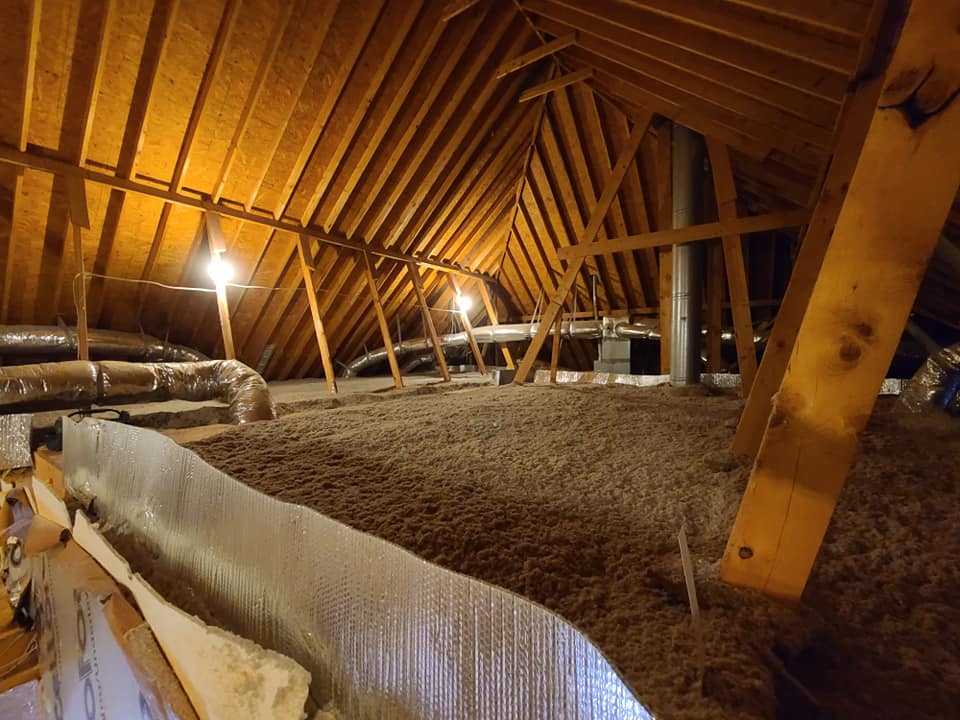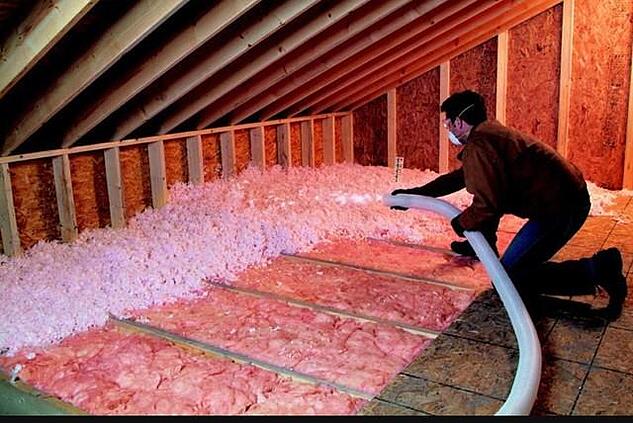Attic Insulation DFW: What You Required to Know Prior To Upgrading Your Insulation
Attic Insulation DFW: What You Required to Know Prior To Upgrading Your Insulation
Blog Article
Discover the Various Kinds Of Attic Insulation and Their Distinct Advantages for Your Home's Energy Efficiency

Fiberglass Insulation
Fiberglass insulation is one of one of the most frequently made use of products for attic insulation due to its exceptional thermal efficiency and cost-effectiveness. Made up of tiny glass fibers, this material effectively catches air, producing a protecting obstacle that aids preserve consistent interior temperatures. Its high R-value per inch makes it especially efficient at withstanding warm transfer, which is critical for energy preservation in homes.
Installation of fiberglass insulation is fairly straightforward, frequently readily available in batts or loose-fill kinds, accommodating various attic room configurations. Furthermore, it is resistant and non-combustible to moisture, decreasing the danger of mold growth. This longevity contributes to its durability, making fiberglass a viable long-term investment for homeowners.
Moreover, fiberglass insulation is often manufactured from recycled products, which boosts its eco-friendliness. The material can also contribute to soundproofing, lessening sound transfer in between areas. While it is vital to use safety gear during installment to stay clear of inflammation from the fibers, the total benefits of fiberglass insulation, consisting of power cost savings and ecological considerations, make it a preferred option for enhancing attic room performance and promoting a comfortable living environment.
Spray Foam Insulation
Spray foam insulation is an extremely effective option for attic insulation, recognized for its exceptional air sealing and thermal efficiency. This cutting-edge insulation material is made up of a blend of isocyanate and polyol material, which, when integrated, broadens swiftly to fill gaps and cavities in the attic room area. Its capability to abide by various surfaces makes sure a continual obstacle versus air leakages, substantially minimizing warmth loss during colder months and warm gain throughout warmer periods.
Among the vital benefits of spray foam insulation is its high R-value per inch, which means it supplies excellent thermal resistance in a reasonably thin application. This is particularly helpful in attic rooms where space is usually limited. Additionally, spray foam can aid reduce moisture build-up, decreasing the risk of mold and mildew growth, which can be harmful to both the structure and interior air quality.
While the preliminary cost of spray foam insulation may be greater than standard alternatives, its lasting energy cost savings, coupled with boosted comfort and enhanced home value, make it a beneficial financial investment for home owners seeking improved power performance. Attic Insulation DFW. Generally, spray foam insulation stands apart as a reliable service for enhancing attic room insulation
Cellulose Insulation

Cellulose insulation is a popular option for attic room insulation, mostly composed of recycled paper products treated with fire resistants. This ecologically pleasant choice is understood for its excellent thermal efficiency, efficiently lowering warmth transfer in both summertime and winter season months. The thick composition of cellulose allows it to fill spaces and gaps in attic areas, supplying a smooth obstacle against air leaks.
Among the substantial advantages of cellulose insulation is its capability to withstand mold and pests, owing to the fire retardant therapies made use of during check here manufacturing. Additionally, it boasts a high R-value per inch, which converts into exceptional energy performance. Homeowners can expect reduced heating & cooling costs as an outcome of improved insulation.
Setup is normally accomplished through blowing loosened cellulose into the wanted location, permitting for a fast and effective procedure. This technique additionally reduces disturbance to the existing framework. Cellulose insulation has a relatively reduced environmental effect, as its manufacturing process uses recycled products, adding to sustainable structure techniques.
Rock Wool Insulation
Amongst the numerous choices for attic room insulation, rock wool, likewise understood as mineral wool, attracts attention due to its outstanding thermal and acoustic efficiency. Made from recycled or natural products, rock wool is developed by thawing rock and rotating it into fibers, causing a product that supplies exceptional insulation buildings.
One of the significant advantages of rock wool insulation is its high R-value, which shows its efficiency in standing up to heat circulation. This characteristic not only improves energy performance however also adds to preserving a comfortable indoor temperature level year-round. Additionally, rock wool is naturally fire-resistant, making it a more secure option for homes as it can withstand heats without melting or launching poisonous fumes.
Furthermore, rock wool insulation succeeds in soundproofing abilities, successfully minimizing sound transmission in between areas and from outside sources. This makes it an ideal option for home owners looking for a Web Site tranquil living atmosphere. Furthermore, rock woollen is moisture-resistant, assisting to stop mold growth and preserving the architectural integrity of the attic room space. Overall, rock woollen insulation offers a thorough option for improving power effectiveness, security, and convenience in property setups.
Radiant Barrier Insulation
Radiant obstacle insulation acts as an effective service for lessening warmth transfer in attic rooms, specifically in warmer environments. This kind of insulation works by showing induction heat far from living rooms, therefore reducing the amount of heat that goes into a home throughout heat - Attic Insulation DFW. Generally made up of an extremely reflective material, such as aluminum foil, radiant barriers are set up in attic rooms, dealing with the roof covering, where they can intercept incoming warmth from the sunlight
The primary advantage of radiant obstacle insulation is its capacity to reduced cooling costs. By mirroring warmth as opposed to absorbing it, radiant barriers can aid maintain an extra stable interior temperature level, decreasing the work on a/c systems. This performance translates right into lower power expenses and enhanced convenience for house owners.
In addition to energy savings, radiant barriers can also contribute to enhanced interior air quality. By reducing warmth buildup, they aid lessen moisture degrees, which can prevent mold growth and improve total air circulation. When mounted properly, radiant barrier insulation can be a very useful addition to any energy-efficient home, making it a worthy factor to consider for homeowners aiming to improve their attic insulation technique.
Conclusion
To conclude, recognizing the different kinds of attic room insulation-- fiberglass, spray foam, cellulose, rock wool, and radiant obstacles-- enables house owners to make informed choices relating to energy performance. Each insulation type offers special advantages, such as exceptional thermal resistance, wetness management, and sound attenuation. By picking the appropriate insulation material, substantial reductions in power expenses can be achieved, along with improvements in interior convenience. Eventually, the right choice adds to an extra lasting living environment and promotes total energy preservation.

In verdict, comprehending the various types of attic room insulation-- fiberglass, spray foam, cellulose, rock woollen, and glowing barriers-- enables property owners to make informed choices pertaining to energy efficiency.
Report this page